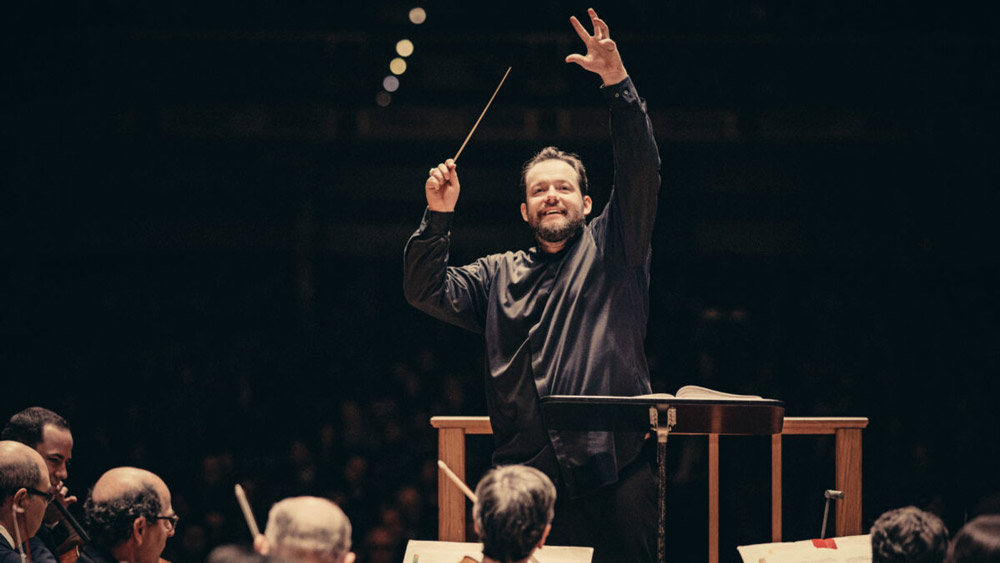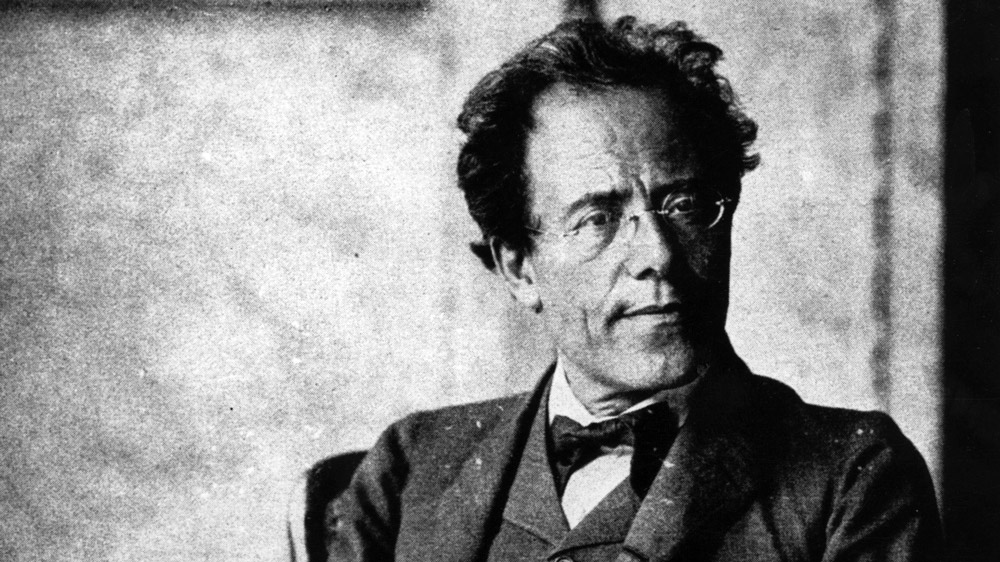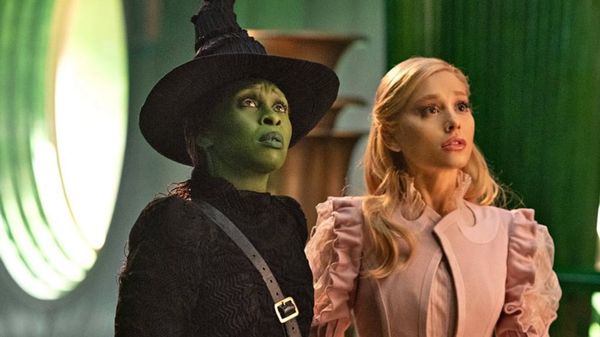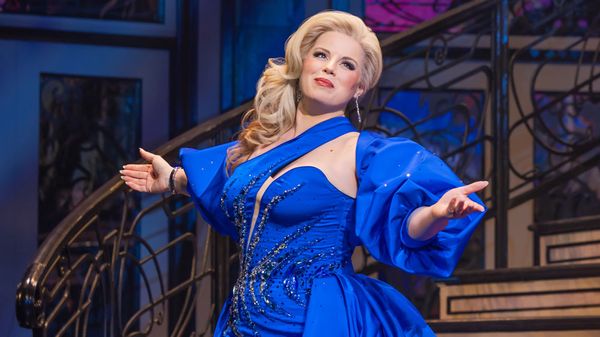
Oct 3
Boston Symphony Takes On Mahler's Mammoth Eighth Symphony – the Symphonic Equivalent of an IMAX Movie
Robert Nesti READ TIME: 5 MIN.
This weekend's Boston Symphony Orchestra concerts are an occasion – a rare performance of Gustav Mahler's Eighth Symphony. It is a massive choral work that is the aural equivalent of watching a spectacular film in IMAX. Mahler put it this way: "Try to imagine the whole universe beginning to ring and resound. There are no longer human voices, but planets and suns revolving." Move over, Francis Ford Coppola, Gustav Mahler got there first. Like that filmmaker's recently released "Megalopolis," it is a mammoth work that has both amazed and baffled critics and audiences.
For more information, visit the Boston Symphony website.
Its occasional performances are largely due to the enormous forces needed. Just this concert along has 124 orchestra players, 8 vocal soloists, 135 members of the Tanglewood Festival Chorus, and 32 in a boys choir under the direction of the BSO's musical director Andris Nelsons. Nelsons directed the orchestra's most recent performance in 2015 at Tanglewood in a memorial concert for Leonard Bernstein, a great champion of the work who pretty much single-handedly brought Mahler back into the repertory in the 1960s through recordings and performances. Prior to that concert, the orchestra performed the Eighth three times: under James Levine during the 2004-2005, and twice under Seiji Ozawa (in the 1971-1972 season and the 1980-1982 season).
But as impressive as the forces that will gather on the Symphony Hall stage this weekend, they are dwarfed by the work's 1910 Munich premiere, which saw an orchestra with some 150 players, two choruses with 250 singers (positioned on either side of the stage), and a children's choir of 350. The producer of the concert nicknamed the work "the symphony of a thousand," a moniker that took; though the composer, who conducted that first performance, took acception to the nickname, fearing the premiere would be a circus. It was not; with some of Europe's leading intellectuals and musical celebrities present, the concert was a triumph – the greatest in the composer/conductor's life. It proved a fleeting one: eight months later he was to die from a relatively rare condition due to an infection in a faulty heart valve. His fame at the time led to hundreds of fans paid him their respect by visiting him in the Vienna sanatorium he was receiving treatment during his last weeks; and upon his death on May 18, 1911, he was hailed by the New York Times as "one of the towering musical figures of his day," Late in his career, he had a brief tenure as the musical director of the New York Philharmonic, as well as numerous conducting appearances with the Metropolitan Opera. What made his death at the age of 50 such a shock is that Mahler showed little sign of illness who haddivided his life between conducting gigs in concert halls throughout Europe and the United States, and composing (during his summer vacations) his large-scaled symphonies. He composed the Eighth in just six weeks in what he called a fever dream in 1906.

Source: Getty Images
The Eighth is something of an outlier in the composer's output – a throwback to his three choral symphonies (2, 3, 4) that preceded three strictly orchestral ones (5, 6, 7). Comprised of two quite disparate movements, it remains, especially in its second half, the closest he came to composing an opera. The first movement is a choral treatment of of a Medieval hymn, "Veni creator spiritus" ("Come, Creator Spirit"), a ninth-century Christian hymn for Pentecost. For pure sonics alone, few works compare to its opening – a massive wall of sound that all but overwhelms the listener. The longer second half offers a vast setting of the closing scenes from Goethe's "Faust," which the Los Angeles Philharmonic annotator Steven Johnson calls "a cantata consisting of a string of discrete sections with different styles and forms: recitative, arioso, strophic hymn, chorale, solo song, to name a few. For that matter, its structure better resembles the music dramas of Wagner – particularly 'Parsifal' – than any symphonic model." Johnson (and others) have commented on the disparate nature of the two halves, calling them a monumental "non sequitor." but adding: "For years scholars have wondered whether Mahler felt some sort of thematic connection between the two texts, or whether he wished simply to force them into a unity of his own devising by linking them musically. But the composer himself once told his wife that he meant the Symphony to emphasize the link between an early expression of Christian belief in the power of the holy spirit and Goethe's symbolic vision of mankind's redemption through love. Mahler makes many philosophical connections throughout the work, consistently stressing the principles of divine grace, earthly inadequacy, and spiritual reincarnation."
Mahler devoted his work to his wife Alma Mahler, who was also a composer; but things were not calm in their marriage at the time of its premiere. Inadvertendly Mahler had learned that she had started an affair with noted architect Walter Gropius while he was preparing the first performance. According to Alma, her husband confronted her to make a choice between them and she chose to stay with Mahler, though continued to see Gropius on the sly. She would later marry Gropius, and later noted novelist Franz Werfel, but became Mahler's most fervent advocate for some fifty years following his death, though her passion for her husband's legacy was marred by the fact she was something of an unreliable narrator.
The Eighth was performed some 20 times in Europe in the years following its premiere, making its American debut in 1916 with the Philadelphia Orchestra under Leopold Stokowski. But for the decades following the First World War, Mahler was largely ignored by major orchestras. After the Second World War, a new sensibility led to a revival of his work, as well as the advent of the long-playing record, which allowed his lengthy works to be recorded and be heard by millions outside of the concert hall. Leonard Bernstein proved to be Mahler's most vocal advocate, though he wasn't alone; and for the past seven decades has become the most recorded of composers, almost to the point of overkill. The Eighth, for instance, has more than two-dozen major recordings; though the Boston Symphony is not amongst them. But a recording really cannot approximate the glorious listening experience that comes from hearing it live in a concert hall, as audiences will have a chance to do this weekend in the acoustic splendor of Boston's Symphony Hall.
The Boston Symphony Orchestra performs Mahler's Symphony No. 8 on Friday, October 4 at 8pm; Saturday, October 5 at 8pm; and Sunday, October 6 at 2pm. For ticket and more information, visit the Boston Symphony website.
Robert Nesti can be reached at [email protected].







